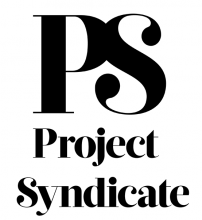You are here
Could a US recession end the trade war?
Aug 29,2019 - Last updated at Aug 29,2019
By Shang-Jin Wei
NEW YORK — The recent inversion of the yield curve in the United States, with the interest rate on ten-year US government bonds currently lower than that on short-term bonds, has raised fears of a possible US recession later this year or in 2020. Yet, paradoxically, a downturn in America could help to improve bilateral economic relations with China and cool the two countries’ escalating trade dispute.
Recent history offers grounds for such predictions. True, by reducing import demand, US recessions normally have a negative impact on economies with a high trade-to-GDP ratio, including China. However, in recent downturns, the US has also been more willing than normal to cooperate with China in order to try to spur recovery.
During the last major US recession in 2008-2010, for example, China appeared to be the only major economy able and willing to boost global demand. Partly as a result of this, Sino-American ties improved, and the US even advocated giving China a greater voice in international bodies, such as the International Monetary Fund and the G20.
Similarly, US-China relations were at a low ebb in mid-2001, following a mid-air collision of a US reconnaissance plane and a Chinese fighter jet over the South China Sea, which resulted in the death of the Chinese pilot and the capture of the American crew. But after the September 11, 2001, terrorist attacks suddenly darkened the US economic outlook, US-China economic ties improved.
Unlike its predecessors, US President Donald Trump’s administration may not have international cooperation in its DNA. But, tellingly, Trump initiated the current tariff war when the US economy was somewhat overheated, partly as a result of the aggressive tax cut that he pushed through Congress in late 2017. Frictions with America’s trading partners, which many economists believe are damaging both the US and the global economy, may in fact be helping to cool down the US economy. But Trump’s stance on China may soften, should a recession materialise.
Two factors could derail this possibility. First, China may be unable or unwilling to provide economic stimulus. The Chinese government’s debt-to-GDP ratio is higher today than it was a decade ago, when the authorities rolled out an aggressive stimulus package to offset weakening export demand in the wake of the global financial crisis. That fact would seem to limit the government’s capacity to pursue an expansionary fiscal policy in the event of a US recession.
Even so, China’s debt-to-GDP ratio is still much lower than that of most other large economies, giving the government some room for additional fiscal stimulus in an economic emergency. Moreover, although the People’s Bank of China is more cautious about injecting liquidity at will, the relatively high reserve ratio the PBOC imposes on commercial banks suggests that it would have significant firepower should the need arise.
The second risk factor is the 2017 US corporate tax cut, which enlarges America’s trade deficit with China, further damaging bilateral relations.
America’s overall trade deficit reflects a shortage of US national savings relative to investment. By causing US government debt to increase by an additional $1-2 trillion over the next decade, the 2017 tax cut will make the government’s savings rate substantially more negative. Because it is unlikely to be offset by a decrease in national investment or a large enough increase in private-sector savings, the tax cut has contributed to a higher US trade deficit. The overall deficit this year is projected to be larger than in 2017 or 2018, and this trend is set to continue.
This strongly suggests that the US trade deficit with China will increase. With US politicians and much of the media evidently failing to recognise the connection between Trump’s tax cut and the growing US trade deficit, they will most probably think the Chinese are doing something pernicious. For this reason, I have long argued that the US tax cut is a significant structural impediment to reducing America’s trade deficit with China, and with many other trading partners, and, therefore, a likely source of tension over the next few years.
Nonetheless, the US trade deficit, as a share of GDP, typically decreases as the American economy weakens, because import demand tends to fall as well. A US recession may, therefore, somewhat moderate the negative impact of the Trump tax cut on the trade deficit.
More importantly, the Chinese government has itself cut taxes aggressively since the end of 2018, reducing value-added tax, from 17 per cent to 16 per cent and then to 13, lowering the corporate income-tax rate, and decreasing the social-security contribution rate for employers.
Because these recent tax cuts are unlikely to be offset by lower investment or a sufficiently large increase in private savings, China’s national savings rate will most probably decrease. As a result, the country’s overall trade surplus, which reflects its excess of savings over investment, will probably be far smaller in 2020, and may even slide into deficit in one or two quarters. Although China will almost certainly still run a bilateral trade surplus with America next year because of the effect of the US tax cut, the imbalance will be much smaller than otherwise would have been the case.
While a US recession would be bad news for the global economy in terms of a direct demand channel, it could help to normalise the troubled relations between America and China. If the world’s two largest economies get along better, businesses and investors everywhere will breathe a sigh of relief. This may turn out to be a silver lining in the next US recession.
Shang-Jin Wei, former Chief Economist of the Asian Development Bank, is Professor of Finance and Economics at Columbia University and a visiting professor at the Australian National University. Project Syndicate, 2019.
www.project-syndicate.org













